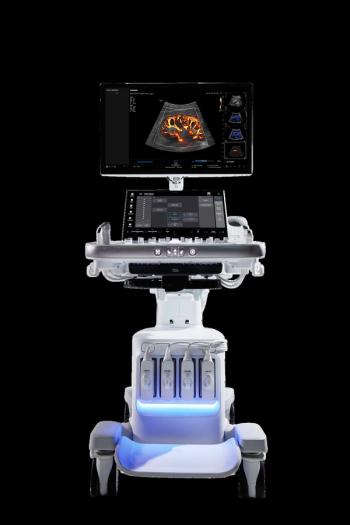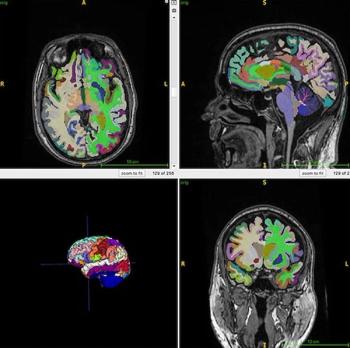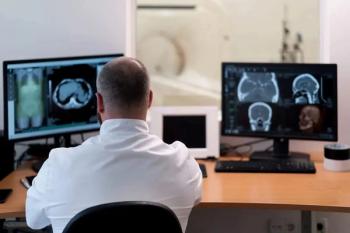
Growth of imaging sparks change in the practice of medicine
Digital imaging and distribution technologies are shaping fundamental changes in workflow. Everything from department design to perceptions about radiology’s role in healthcare is up for grabs.Pundits predict that by 2010 up to 80% of tertiary-care
Digital imaging and distribution technologies are shaping fundamental changes in workflow. Everything from department design to perceptions about radiology’s role in healthcare is up for grabs.
Pundits predict that by 2010 up to 80% of tertiary-care facilities will boast filmless operations-meaning that at least 80% of a site’s exams will be electronically acquired, interpreted, stored, and distributed. That’s in contrast to the estimated 2.2% of 1700 large hospitals and imaging centers that are filmless today, according to a survey by IMV Information Services of Des Plaines, IL. Community hospitals are expected to catch up to the filmless phenomenon by 2020.
This emphasis on electronic communications is expected to give rise to increased use of other technologies. Vendors such as Stentor are in the R&D phase of incorporating flat-panel displays into diagnostic workstations, replacing today’s cathode ray tubes. Wireless applications like Internet navigation using personal digital assistants, cell phones, and pagers are already in use. Interface tools such as “physician dashboards” that gather and display images and medical records from disparate databases are in development by Microsoft, Kodak, Siemens, and others. Meanwhile, information technology is being adapted for a wide range of artificial intelligence applications for computer-assisted diagnostics.
The transition to filmless operations will affect not only how radiologists work, but where. Conventional reading rooms have multiple limitations, particularly when it comes time to shift to digital operations. Problems range from inadequate lighting to poor location of reading workstations and light boxes, excessive reflection and glare, minimal sound insulation, and overcrowding. Rooms are unable to accommodate the range of activities performed there.
In addition, conventional departments are not designed with the free flow of information in mind. In a digital regime, the old model of a centralized department that revolves around images will give way to a distributed data environment with patients at the core, said Dr. Osman Ratib, vice chair of information technology at the University of California, Los Angeles.
“In the past we tried to make images the centerpiece and imported the rest of the patient data to us,” he said. “We are reversing that strategy, and it’s meant a change in culture as well as infrastructure.”
Ratib is designing a network for image management and workflow that embodies this concept for UCLA’s new main hospital, scheduled to open in 2005. Three adjacent buildings will house outpatient services and short-term hospitalizations. Imaging and information systems in the new hospital will be filmless, paperless, and fully electronic, and communications networks will revolve around patients, not PACS.
New workstations designed in a four-unit kiosk configuration will combine both diagnostic screens and large overhead flat-panel displays to facilitate clinician conferences. The high-performance kiosks will be multipurpose, allowing radiologists to access images from any workstation simply by logging in. The shift eliminates prefetching protocols and the need to anticipate how and at which workstation images will be viewed. Such individual functionality is in keeping with broader predictions about the workstation of the future.
“The radiologist workstation will contain all the information and tools needed: an integrated system that includes reporting, image display, and access to the electronic medical record,” said Dr. Curtis Langlotz, an assistant professor of radiology at the University of Pennsylvania and founder of eDict Systems, a software company specializing in structured reporting systems.
Vendors are already at work with Internet-based tools that may speed adoption of EMR-enabled workstations by leapfrogging some of the technical barriers that stand in the way. Instead of imposing a layer of EMR software on top of an existing RIS infrastructure, for example, companies like Microsoft, Kodak, and Siemens are developing Web-based user interfaces that gather requested data from selected databases. The information can then be displayed in customized formats. Such physician dashboards can be further tailored to reflect the specific needs and habits of individual users.
“The issue is no longer any image, anywhere, anytime,” said Michael Sullivan, director of product line management and business development for the Paris segment of Kodak Health Imaging. “It is getting the right information to the right person with bulletproof reliability.”
A few such products are already commercially available. Microsoft’s Physician Digital Dashboard allows information on a specific patient to be pulled from various systems and displayed simultaneously on the dashboard.
Siemens Medical Solutions is marketing a browser-based personalized portal product called Health Enterprise Dashboard that gives physicians access to clinical and financial applications, including patient records, test results, and radiology exams, according to Rik Primo, director of new business development.
Ultimately, trends in both digital imaging and consumer-directed service will lay to rest the concept of radiology departments as merely a collection of rooms and tools, according to Morris Stein, president of the Stein-Cox Group, a Phoenix-based architectural firm specializing in healthcare facilities.
“The future radiology department is focused on the patient, not technology,” he said. “Digital technology provides the tools that will allow us to make that shift.”
Newsletter
Stay at the forefront of radiology with the Diagnostic Imaging newsletter, delivering the latest news, clinical insights, and imaging advancements for today’s radiologists.



























